Like ever other science paleontology began with big discoveries, the existence of the dinosaurs would be one example. As time passed paleontologists began to fill in a few of the big details, such as the fact that some dinosaurs walked on two legs. As more and better preserved specimens were unearthed more and finer details were uncovered, like the fact that some dinosaurs actually had a covering of fine feathers to help keep them warm. Finding the kind of pristine fossils needed to fill in those gaps in our knowledge however requires a lot of patience, hard work and let’s be honest, luck.
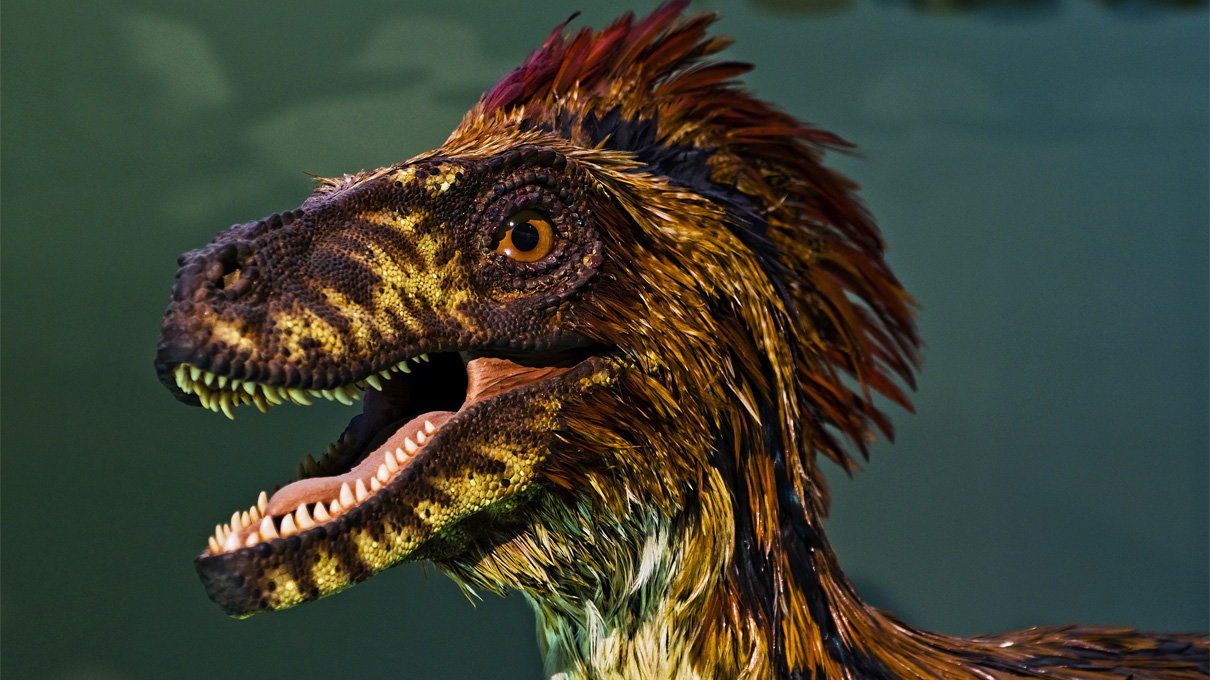
Some of the best preserved fossils in recent years have come from amber deposits in the country of Myanmar, see my posts of 16 December 2016 and 1 June 2019. Now a new study in the journal ‘Current Biology’ by scientists at the New Jersey Institute of Technology, the University of Rennes in France and the Nanjing Institute of Geology and Paleontology has announced the discovery of a new fossil from Myanmar that answers a lot of questions about a unique group of extinct insects known as ‘Hell-ants’.

In the fossil record hell ants are one of the earliest known groups of ants, with 14 different known species from the Cretaceous period they appear to have become totally extinct in the same disaster that killed off the dinosaurs. Recognizing a hell ant is quite easy, they all have two very sharp, dagger like mandibles extending out and curving upwards from their lower jaw. In addition most species have a horn like structure at the top of their heads. The whole configuration strongly suggests that the hell ants attacked their prey by sweeping it up in the dagger like mandibles, trapping it against the horn structure.
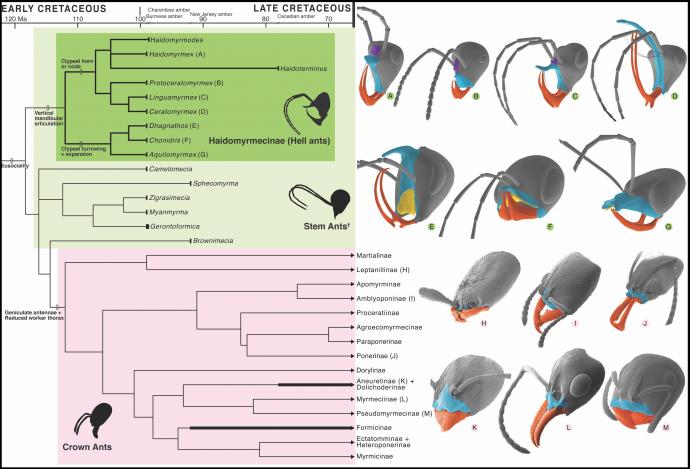
There’s a problem with that idea however, those ants who exist today, like virtually all insects have mouth parts that move, not up and down as ours do but horizontally. That’s one of the reasons why close up movies of insects look so icky, their mouth parts move side to side. The idea that hell ants somehow moved their jaws upward was quite controversial, many paleontologists refused to believe it until they saw it.
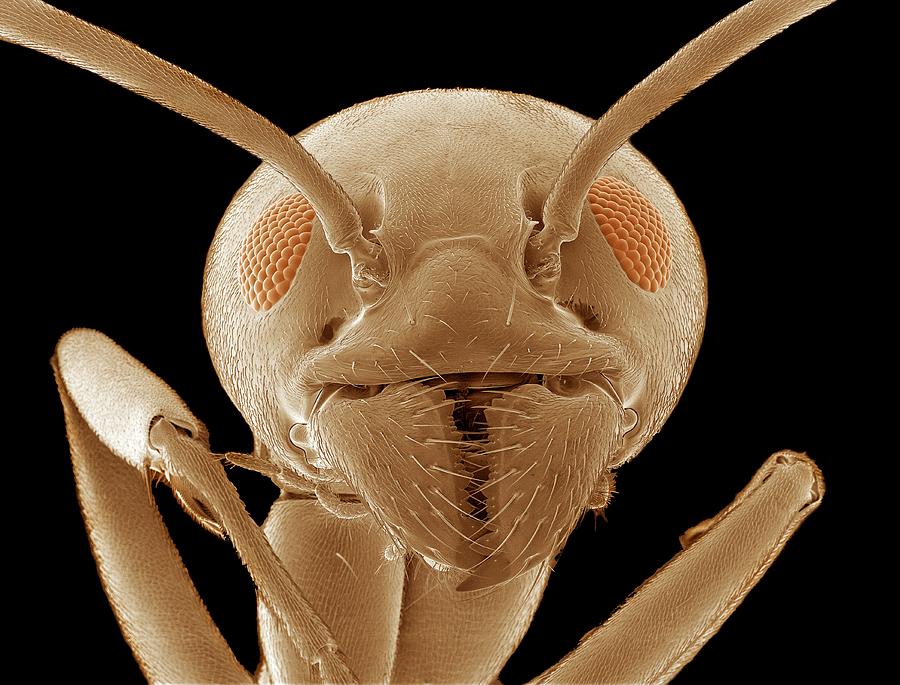
Well they believe it now, for a piece of amber from Myanmar has recently been discovered that encases a hell ant caught in the act of attacking its prey. Looking at the image below it is obvious that the Hell Ant, a new species that has been give the name Ceratomyrex ellenbergeri has grabbed its victim, an immature specimen of an ancient relative of cockroaches called Caputoraptor elegans from beneath with those dagger like mandibles. Capturing it in a fashion that could only be accomplished if those mandibles could move up and down.

Fossils like the hell ant from Myanmar, that answer specific questions are of course rare, even the best researchers can spend years of their career looking for one. Just as often scientists can make discoveries by using the newest, latest technology to examine fossils in new ways to answer important questions about the history of life.
One such question deals with the first appearance of the sense of sight in the fossil record, the first animals to have eyes. While paleontologists agree that the compound eye of the ancient arthropods called trilobites were the first eyes to evolve there are still many questions about that eye. How exactly did it function and was it as advanced as the compound eye of modern arthropods like insects or crustaceans? In other words how good was the vision of a trilobite?
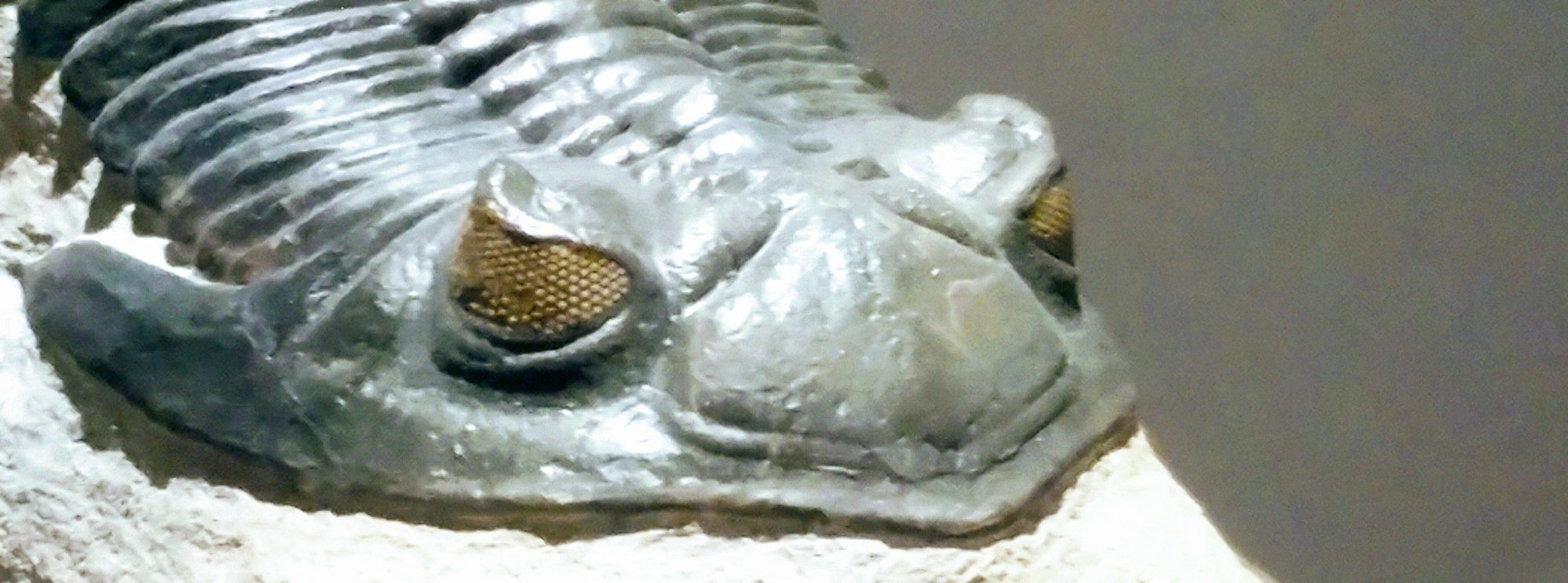
Now paleontologists at the University of Cologne and the University of Edinburgh have employed a high-tech digital microscope to examine the eye of a particularly well preserved specimen of a 429 million year old trilobite Aulacopleura kionickii from the Czech Republic. What the scientists found was that the trilobite’s eye was constructed from a honeycomb structure of 200 cells with each cell having its own lens and providing the animal with one pixel of information. The vision of a 430 million year old animal was therefore equivalent to a modern digital image with 200 pixels, vague and imprecise but still the best in the world at that time.
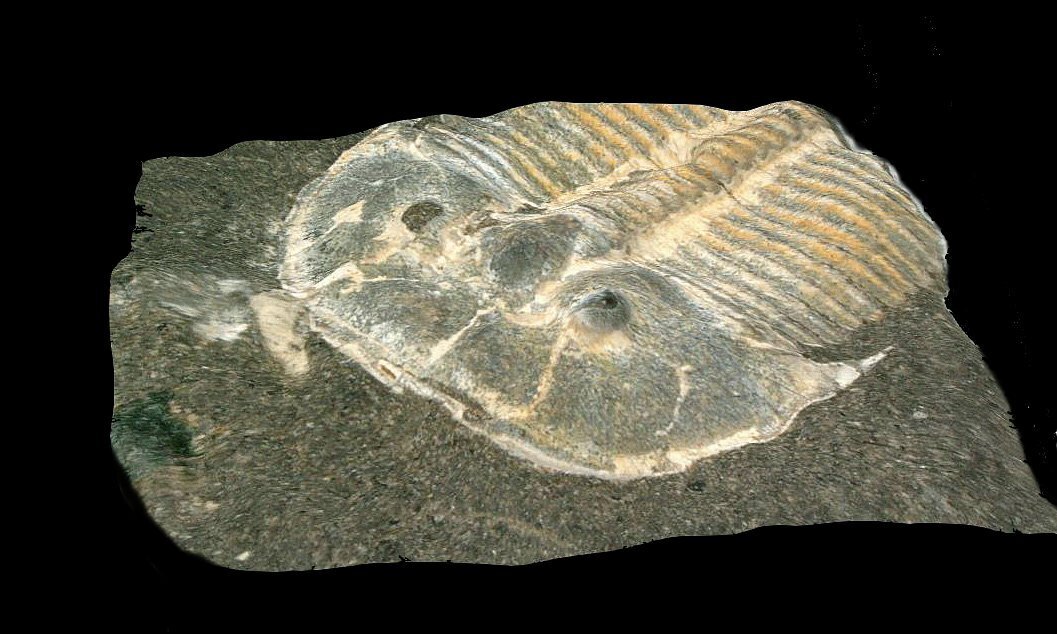
Such an eye is also virtually identical to that of a modern bee or dragonfly, the only difference being the number of cells, a dragonfly’s compound eye for instance can have as many as 30,000 cells. The fact that the arthropod eye has remained so stable for so long is a testament to both the simplicity and versatility of the compound eye but also to the conservatism of evolution. If you have an organ that is doing a job quite well it can exist for many millions of years with only superficial changes.
As a final example of how, if you wait long enough the fossil record will provide amazing evidence of how creatures lived long ago a recent fossil of an ichthyosaur was unearthed in China with the remains of its last meal still recognizable in its stomach. Now ichthyosaurs were aquatic reptiles who lived during the age of the dinosaurs, see my posts of 28 October 2017 and 18 April 2018, and the fossil ichthyosaur found in China was dated to about 200 million years ago.
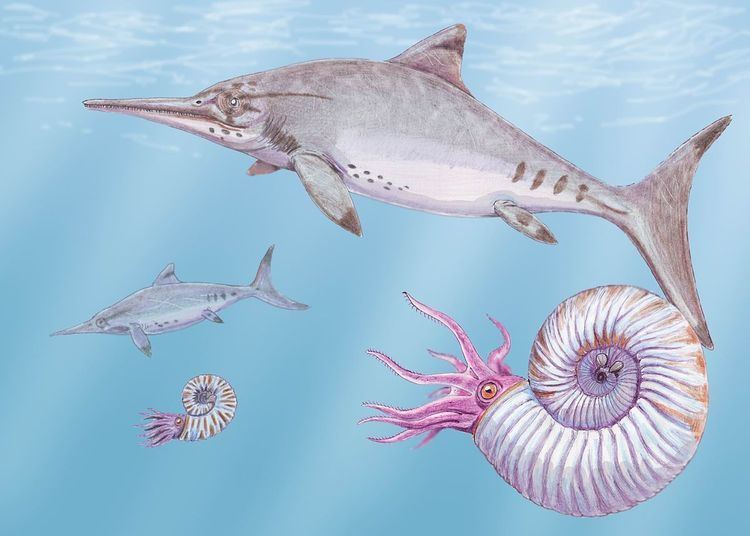

According to the paper published in the journal iScience the skeleton of the ichthyosaur, a member of the genus Guizhouichthyosaurs was nearly complete and measured about 5 meters in length. The big surprise was inside however, the partial skeleton of another marine reptile known as a thalattosaur.
In life the thalattosaur would have been about 4 meters in length making this find the earliest known example of one large predator feeding on another. Although the thalattosaur’s head and tail were missing the rest of the skeleton was intact, the four limbs still connected to the body. Although the researchers cannot be certain they consider the intact condition of the body to be evidence that what they have discovered is a case of predation, not scavenging. In either case it is a remarkable find, two fossils for the price of one telling a story from long ago.
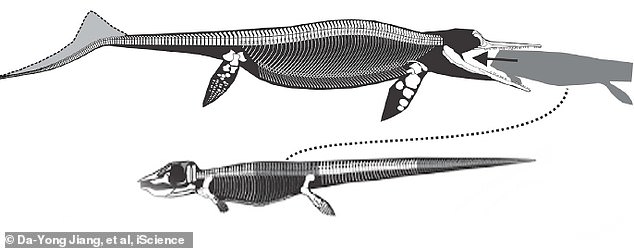
Bit by bit paleontologists are filling in the gaps in our knowledge of the history of life here on Earth. Using the trilobite’s eye as a metaphor our image of the past started out with only a small number of pixels, vague and imprecise. Each new fossil discovery adds one more pixel to that image and while we may not yet have reached the level of high-definition our view of the past is becoming clearer all the time.
